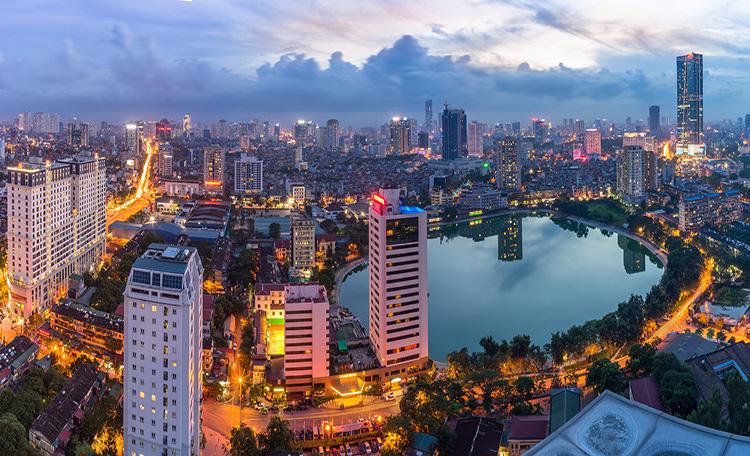Despite the gloomy global economic outlook, Vietnam’s economy is still expected to maintain stable growth of between 5.9 per cent and 7.3 per cent in 2023, according to Cushman & Wakefield’s Southeast Asia Outlook 2023.
The report, released on April 12, pointed out that Vietnam’s economy, along with the Philippines’, is expected to lead growth in 2023 in Southeast Asia. Vietnam continues to benefit from trade diversification, though export growth is showing signs of tempering due to the global slowdown.
2022 witnessed the recovery of Vietnam’s economy, with GDP growth of 8 per cent, exceeding previous forecasts from most economic institutions of 6.5 to 7.5 per cent. However, in 2023, despite the positive expectations, caution and uncertainty remain the general sentiment given anticipated challenges such as Vietnam’s reliance on trade with global partners, increasing inflationary pressure, and tightening monetary and fiscal policies in many countries.
Regarding real estate, Ms. Trang Bui, Country Head of Cushman & Wakefield Vietnam, said the increased regionalization of trade and the diversification of supply chains in the region will drive investment in Vietnam, particularly in the logistics and industrial, office, and residential space. “As development policies, ease of doing business, and government effectiveness improve, there will be a potential acceleration of the institutionalization of real estate in emerging Southeast Asia markets like Vietnam,” she said.
In Ho Chi Minh City’s office sector, demand is expected to trend higher in 2023, albeit at a slower pace, especially for high-quality buildings in prime areas. Recent legal revisions and market incidents have delayed the completion of some future supply at prime locations. New business hubs are in development outside of the CBD, moving towards the south in District 7 and the east in Thu Duc city.
In Hanoi, with limited space left in the CBD, new business hubs still in development have increased in popularity among developers and tenants. Expectant new projects in upcoming years are also distributed in non-CBD areas, especially in western urban districts. High-quality supply that can satisfy large-scale leasing demand is a more favorable option for companies that can afford expansion.
Regarding the industrial sector, southern Vietnam is being positioned to become a new production hub, with rising land rents and land use costs making ready-built factories likely to become the preferred asset class in the near future. Meanwhile, the north of Vietnam has recorded interest in the ready-built warehouse model. Despite the downward projections for industrial real estate growth in 2023, due to the effects of inflation and economic uncertainties, investors looking for opportunistic strategies should consider this as there are many divesting assets to acquire and prepare for incoming market expansion.
The residential, ultra-luxury, and luxury sectors in Ho Chi Minh City have recently observed oversupply, with a slowdown in both demand and market sentiment. Due to the government’s credit control over Vietnam’s real estate industry, rising interest rates, legal issues for projects, and bond issuance tightening, Hanoi’s residential market is expected to experience a downtrend in 2023. However, segments that match actual housing demand, such as mid-end and high-end, should still receive major attention in the market.
According to the Southeast Asia Outlook 2023, the region is expected to be one of the leading sources of growth for the global economy, with growth averaging 4.7 per cent this year, close to the pre-pandemic average of 5 per cent annually.
Mr. Anshul Jain, Cushman & Wakefield’s Head of Asia Pacific Tenant Representation and Managing Director, India & Southeast Asia, said that while the pace of economic growth differs across markets, Southeast Asia’s economy is huge and has the third-largest population after China and India. Benefitting from current global trade trends and geopolitical environment, Southeast Asia offers a wide spectrum of investment opportunities as a fast-growing region.
He also pointed out the positive impact of China’s reopening on Southeast Asia. “China’s reopening is a catalyst for Southeast Asian economies given that China is a key export destination,” he said. “Higher consumption demand in the country bodes well for commercial, industrial, and residential investments in the region. Hotel and retail assets could also see the strongest uplift in the near term due to a strong tourism boost.”
The report also identified other positive drivers that will contribute to growth in Southeast Asia over the decade ahead, including increasing urbanization fueled by digital transformation, and sustainability, which is seen as a rising opportunity in Southeast Asia as the major regional economies set “green building” targets.









 Google translate
Google translate